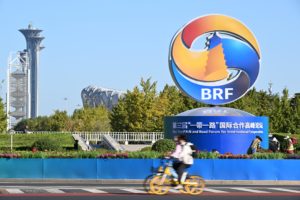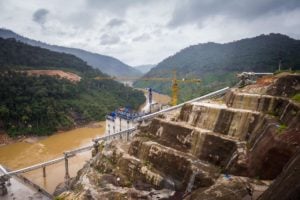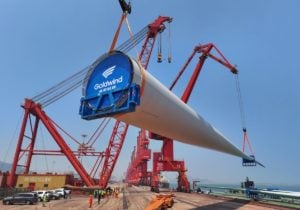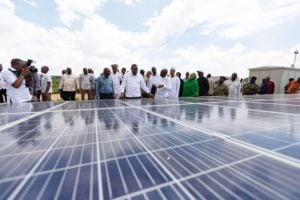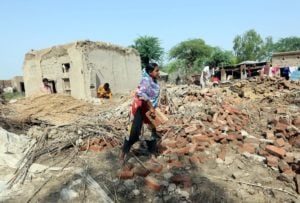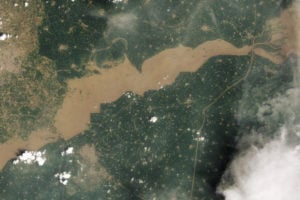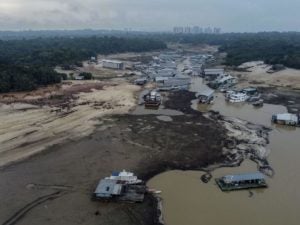After a pandemic-induced hiatus, the Third Belt and Road Forum took place on 17-18 October in Beijing.
It provided rare insight into China and member countries’ aspirations for the Belt and Road Initiative (BRI) as it enters its second decade. The BRI is evolving, with new announcements made particularly in the fields of “green” and “blue” (ocean) cooperation. There were hints of a more cautious approach from China. Yet, while promoting “small yet smart” infrastructure projects, it did not back away from delivering large-scale finance via its development banks.
How exactly the new loans will land, as countries lobby for more investments while facing rising debt burdens, will become apparent in the coming weeks.
So, what announcements were made? And what are the signals for the future direction of the BRI?
Still big, still greening
Tom Baxter, Global China editor
In a closing speech, Xi Jinping gave an overview of the forum’s outcomes and his vision of the BRI’s future. It contained a blizzard of announcements, ranging from opening up greater market access to China, to a new global initiative on governing AI. Perhaps most notably, Xi indicated a doubling down on the BRI as a promoter of large-scale, debt-financed infrastructure. The two Chinese development banks most engaged with BRI lending would each be given a “financing window” worth 350 billion yuan (US$47.8 billion). The pledges were similar in scale to those announced at the First Belt and Road Forum in 2017.
An additional 80 billion yuan ($11 billion) from the Silk Road Fund was also announced.
Xi stated that together this finance would contribute to promoting both large-scale “signature” and “small but beautiful” infrastructure projects. The latter term (now translated in the official English transcript as “small yet smart”) means more modest, less risky constructions.
The announcement of more finance for infrastructure comes as something of a surprise. Loans to partner countries signed up to the BRI have declined over the last couple of years. Many countries find themselves in a difficult economic situation as interest rate rises accentuate debt burdens. Data from the Boston University Center for Global Development Policy shows that total loans from China’s two main development banks have consistently declined since 2016. In 2021, just US$3.7 billion worth of loans were disbursed to Belt and Road partners. Xi also indicated, however, that the new finance pledges would “support BRI projects on the basis of market and business operation” – perhaps a sign of a more cautious approach to overseas financing.
There was an emphasis on green development at the forum, including a high-level dialogue on greening the BRI. An outcome document on Belt and Road Green Development encouraged partners to “strengthen cooperation on green energy, support other developing countries in green and low-carbon energy development, [and] encourage countries to set targets for renewable energy deployment based on nationally determined contributions.” In Xi’s closing speech, “green development” formed the fourth of a list of eight cooperation areas.
As seen over the last few years, some of these green goals may be easier said than done. One new scheme worth watching is the Green Investment and Finance Partnership. Could it help address the financing gap for green projects in developing countries? A pledge to train 10,000 students in green technologies by 2030, an echo of previous commitments to global south countries, may also help address capacity gaps.
Adding to the big numbers, Xi said that US$97 billion worth of deals were signed at the forum. Details of these projects will begin to emerge in the coming weeks.
African leaders look for infrastructure and finance
Justus Wanzala, Africa editor
While the forum this year saw fewer national leaders attend (23, compared to 37 at the last forum in 2019), a number of important partners were in Beijing last week.
From the African continent, Kenya’s President William Ruto, Republic of Congo President Denis Sassou Nguesso and Ethiopian Prime Minister Abiy Ahmed all attended. Africa’s largest economy, Nigeria, sent Vice President Kashim Shettima. The leaders used their speeches to invite further lending for desperately needed infrastructure, and support for industrialisation.
Ruto called for greater investment in energy, transport and industrial infrastructure: “Africa can become the world’s clean, green, cheap global manufacturing hub if the right volume of investment is directed to our continent.” He also used the forum to lobby for a further $1 billion in loans, despite Kenya’s coming crunch year for debt repayments in 2024. Nigeria, meanwhile, sought funding for new projects. Deals were signed for $2 billion worth in the country, with “letters of intent” signed for an extra $4 billion, according to Reuters.
While no doubt discussed on the side lines and at bilateral meetings, debt distress was notably missing from official communications between African leaders and China. A total of eight African countries are currently debt distressed, according to the IMF, with Chinese banks among the major bilateral lenders to a number of them. Nonetheless, African leaders’ mission in Beijing last week appeared to be about securing even more financing in the push to expand and restructure their economies.
Low turnout, low concern in the Americas
Patrick Moore, Latin America editor
While 22 Latin American and Caribbean nations have signed up to the BRI, only the leaders of Chile and Argentina arrived in Beijing for last week’s forum – a meagre turnout, but true to previous form.
In a first China visit for Chile’s young president, Gabriel Boric, meetings with Xi Jinping and Premier Li saw calls for Chinese firms to invest in Chile’s green hydrogen ambitions, 5G networks, and lithium industry; a US$233 million lithium plant deal with Tsingshan was announced during his visit.
Xi was keen to note that Chile was the first South American country to establish diplomatic relations with China (in 1970), and is still seen as a key partner in the region. Boric expressed support for China’s efforts to join the Trans-Pacific trade partnership, and invited Xi for a state visit in 2024 – including a stop in Antarctica.
As for Argentina, the forum was a last dance for outgoing president Alberto Fernández, whose visit came as campaigns wrapped up ahead of the country’s fiercely contested 22 October elections. His government has sought close ties with China since 2019. During his term, Argentina formally joined the BRI and recently received an invitation to join the BRICS bloc. While in China, Fernández began the country’s entry process into the New Development Bank, the so-called “BRICS bank”.
At the forum, there were BRI project progress assessments between the two countries, but no infrastructure deals of note. The top-line announcement was the upping of Argentina’s currency swap line with Beijing from $5 billion to $6.5 billion.
For Fernández, the visit seemed mainly focused on offering reassurances on the two countries’ relations ahead of a potentially radical shift in the coming months, should far-right libertarian Javier Milei – who has labelled China an “assassin” and threatened to cut ties – emerge victorious in the second round of presidential elections on 19 November.
That so many leaders did not appear in Beijing may come down to priorities. Pressing domestic crises likely trumped the grand statements and mood-setting of the forum. Meanwhile, with South America seeing some of the highest BRI investment in years so far in 2023, leaders may feel confident about the region’s position within the initiative.
‘Blue cooperation’
Regina Lam, Special projects assistant editor
From green BRI to blue BRI, the Third Belt and Road Forum for the first time included a special thematic forum on ocean cooperation. It concluded with the unveiling of a new “Blue Cooperation Initiative” that laid down principles on how China could cooperate on ocean-related projects with BRI nations.
The special forum’s outcome document speaks of the ocean as a source of development, post-pandemic economic recovery, and sustainable growth. It pledges to establish financial institutions for blue investments, support global aquaculture technologies, and build marine scientific research partnerships.
According to multiple Chinese policy papers, the blue economy vision is built on synergies between economic development and ecological protection. It aims to boost fisheries and marine aquaculture, shipping, offshore renewable energy, polar research, and even medical discoveries. It also covers restoring and protecting coastal ecosystems, which hold high blue carbon values and are instrumental to climate adaptation.
Before and during the forum, China also signed national and ministerial agreements on ocean and Antarctic cooperation with Indonesia, Vietnam, Argentina, Chile and other countries. Representatives from small island developing states, including the Solomon Islands, Seychelles, Maldives, also attended the session, which involved discussing cooperation on coastal adaptation.
